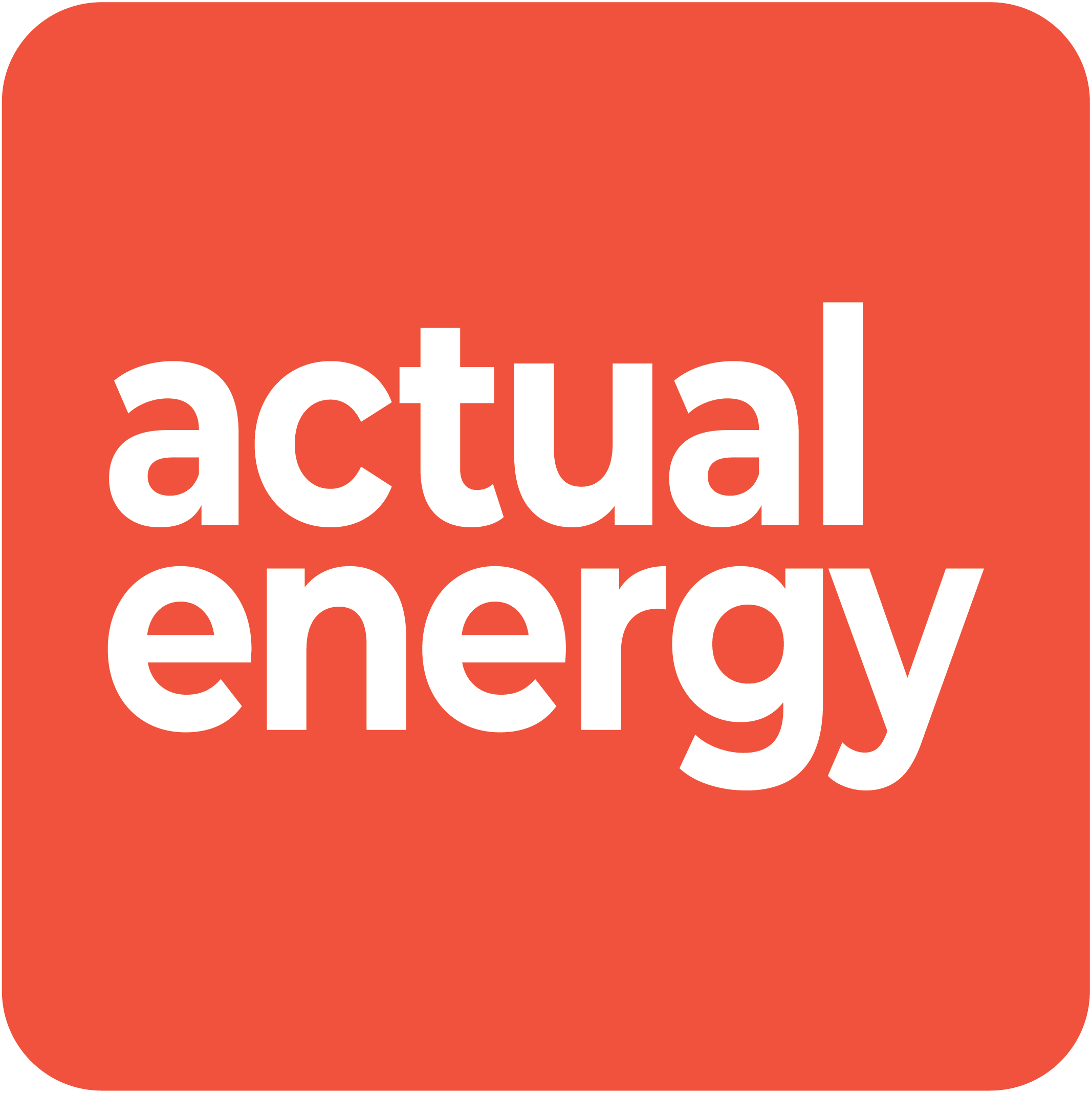At Actual Energy, we supply electricity to our commercial and industrial customers, but we also educate and advise them on environmental sustainability efforts related to energy consumption, efficiency, and conservation. Beneficial electrification, a term used with increasing frequency, best describes how our product and our purpose coexist. According to the Regulatory Assistance Project, for electrification to be considered beneficial, “it must meet one or more of the following conditions without adversely affecting the other two: 1) Save consumers money over the long run; 2) Enable better grid management; and 3) Reduce negative environmental impacts.” This trifecta represents the core of Actual Energy’s business model. Our product is electricity, but beneficial electrification is what we do.
First, the cost savings. With Actual Energy, customers can realize substantial savings over long-term, fixed- price contracts. How? With hourly, wholesale pricing—direct from the grid. In an industry that leans into obfuscation, our transparency is groundbreaking. And for the risk-averse: we don’t lock customers into long-term contracts. They can leave at any time, but they don’t. Our attrition rate, on which we are intently focused, is less than 2%.
We don’t manage the grid, but we are grid influencers.
On hot July afternoons, when the electric grid is under strain to meet high demand, wouldn’t it be incredible if all our customers—500, 1,000, 10,000—reduced their electricity consumption at the same time? Aspirational, yes, but it’s a goal of ours. In a time of increasing pressure on power grids, these efforts would be profoundly impactful, because when electricity demand is greatest, the most carbon-intense fossil fuels—oil and coal—are summoned, and prices rise. The carbon intensity of the power grid’s generation mix varies from hour to hour, depending upon demand and weather conditions, so the time of day electricity is used is as important as the amount of electricity used. For example, the carbon intensity of electricity from 5-6 pm on a July day—when demand has increased and oil and coal are likely in the fuel mix—is much greater than from 11am-12pm, when solar power output is high, or from 1-2am, when wind farms may be more productive and demand is low. And, perhaps most importantly, this hourly carbon variation complements Actual Energy’s hourly electricity pricing. When carbon intensity decreases, prices tend to decrease as well, because high carbon intensity generation is generally the most expensive.
Well done is better than well said, according to none other than the inventor of electricity. In this vein, the Actual Energy team prioritizes educating and advising customers about load shifting, energy efficiency, and conservation efforts that can reduce consumption and carbon emissions. Our signature Carbon Response Program provides second-by-second, hourly, and avoided carbon emissions data and a customizable dashboard through which customers can monitor and manage electricity usage. Our notification system, Actual Alerts, encourages customers to shift usage based on carbon intensity, high and low pricing, and peak day events. If this sounds complicated, it’s not. Our Energy Advisory Services Group works with businesses of all shapes and sizes to create energy management plans that optimize electricity usage. Members of this team are regularly deployed to manufacturing facilities, college campuses, and hospital complexes to evaluate energy efficiency and conservation opportunities and optimize on-site generation. These are not one-off visits: our deep bench of experts is just a phone call or email away.
We are problem solvers. And carbon is a huge problem. The recent Intergovernmental Panel on Climate Change report revealed that our environmental runway is even shorter than previously determined—Net Zero by 2050 is now, at the minimum, Net Zero by 2040. Companies large and small, facing increasing pressure from stakeholders—customers, partners, investors, employees—are laser-focused on carbon reduction efforts; they are moving beyond Scope 1 and Scope 2 GHG emissions reporting and diving into Scope 3, examining the corporate value chain and its inherent complexities. With hourly carbon accounting and sustainability reporting support, Actual Energy is uniquely positioned to provide guidance in these areas. “Electrify everything” is today’s clarion call, and we couldn’t be more excited about it.
Let’s circle back to saving money. Though we seem to be in an extended carbon regulation holding pattern at the federal level, municipalities are charging ahead. The latest iteration of Boston’s Building Energy and Disclosure Ordinance (BERDO 2.0), if passed, will expand the city’s building sector emissions regulations. New York City’s Local Law 97 seeks to reduce building emissions 40 percent by 2030 and 80 percent by 2050. Both measures mete out penalties for non-GHG reduction compliance. We can’t predict the future from a policy perspective, but carbon pricing in some form—carbon tax or cap and trade—is very likely in the offing, and the current figure circulating is $51 for every ton of carbon released into the atmosphere. With Actual Energy as an energy provider, you’ll be starting on third base. Let us help you realize the environmental triad of cost, carbon, and tax savings.
Negative environmental impacts affect public health, the economy, food security, education, immigration, and so much more. For Actual Energy, beneficial electrification is the through line. We incentivize and facilitate customers’ decarbonization efforts. We offer renewable energy solutions, tailor-made for each unique business type, location, and circumstance. We give our customers agency over their electricity usage, and the education to exercise this agency in a way that most benefits society. We understand that this is exactly the type of collective action needed to face present and future environmental challenges.




